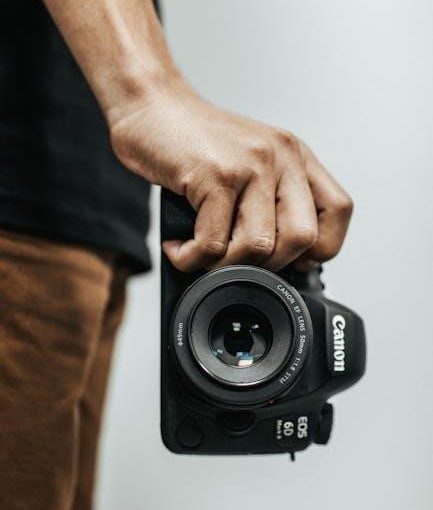The Cine Lens Manual is a comprehensive guide to cinema optics, offering insights into lens technology, history, and artistic application for filmmakers, students, and professionals․
1․1 What is The Cine Lens Manual?
The Cine Lens Manual is a comprehensive guide to cinema optics, detailing the art, science, and history of cine lenses․ It serves as an essential resource for filmmakers, cinematographers, and enthusiasts, offering deep insights into lens design, functionality, and application․ This manual is designed to cater to all levels of expertise, from novices to seasoned professionals, providing a thorough understanding of cinema optics․ It covers technical aspects, historical evolution, and practical usage, making it an indispensable tool for anyone involved in filmmaking or curious about the role of lenses in storytelling․
1․2 Purpose and Scope of the Manual
The Cine Lens Manual aims to bridge the gap in cinema optics knowledge, serving as a single-source reference for cinematographers, directors, and technicians․ Its scope encompasses the technical, historical, and artistic aspects of cine lenses, providing a detailed exploration of their design, functionality, and application․ The manual is designed to educate and inspire, offering practical insights for filmmakers while also serving as a historical archive․ Its comprehensive approach ensures that readers gain a holistic understanding of cinema optics, making it an invaluable resource for both learning and professional application in the film industry․
1․3 Key Features and Benefits for Filmmakers
The Cine Lens Manual offers a detailed examination of cinema optics, combining technical insights with practical applications․ It serves as a masterclass on lens technology, covering history, design, and customization․ Filmmakers gain a deeper understanding of lens performance, enabling informed choices for visual storytelling․ The manual’s clear, accessible language and extensive illustrations make it a valuable resource for professionals and newcomers alike, providing tools to enhance creativity and technical precision in film production․
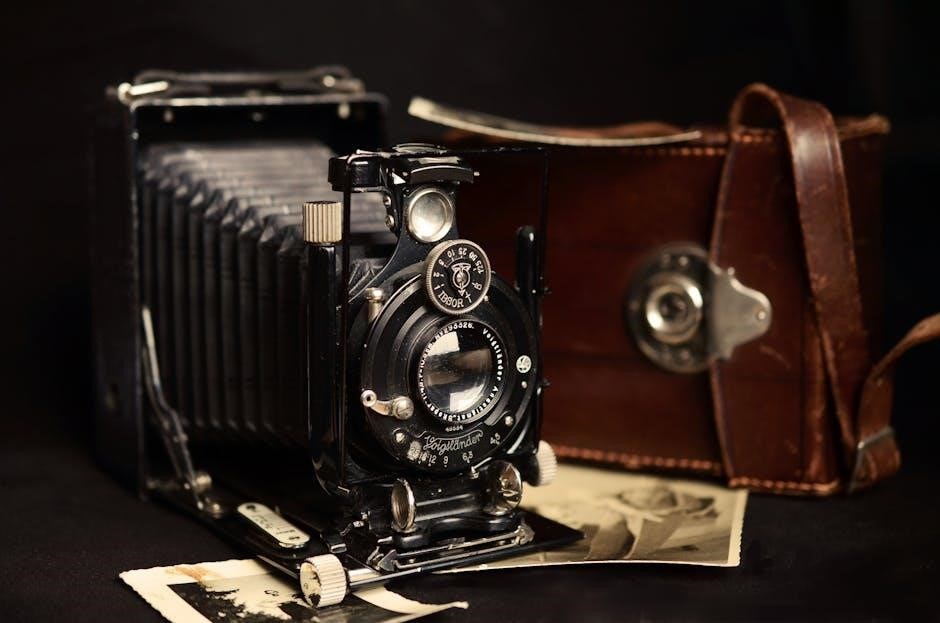
History of Cine Lenses
The Cine Lens Manual explores the evolution of cinema optics, tracing milestones from early camera optics to modern lens innovations, shaping the art of filmmaking․
2․1 Evolution of Cinema Optics
The evolution of cinema optics began with early camera lenses adapted for motion pictures, progressing through advancements in glass, coatings, and mechanical designs․ Innovations like anamorphic lenses in the 1950s and modern digital optics have transformed storytelling, enabling filmmakers to achieve unique visual styles and technical precision․ This section delves into the technological milestones that have shaped cinema optics, providing a foundational understanding of how lenses have influenced the art and craft of filmmaking over the decades․
2․2 Milestones in Cine Lens Development
Key milestones in cine lens development include the introduction of anamorphic lenses in the 1950s, enabling widescreen formats, and the advent of high-speed lenses for low-light shooting․ The 1970s saw the rise of zoom lenses, offering versatility for cinematographers․ Modern advancements include digital lens metadata and specialized coatings for reduced flare and improved contrast․ These innovations have continuously enhanced the artistic and technical capabilities of filmmakers, providing tools to achieve precise visual styles and storytelling goals․ Each milestone reflects the industry’s commitment to pushing the boundaries of cinematic expression through optical excellence․
2․3 Historical Context and Impact on Filmmaking
The evolution of cine lenses has profoundly shaped filmmaking, enabling new visual storytelling techniques․ Early advancements in lens design allowed for greater control over focus, aperture, and perspective, influencing the aesthetic of classic films․ The introduction of widescreen formats and anamorphic lenses in the 1950s transformed cinematic composition․ Zoom lenses in the 1970s added dynamic versatility to scenes․ These innovations democratized high-quality cinematography, empowering filmmakers to experiment and innovate․ The historical development of cine lenses reflects a continuous interplay between technology and artistic vision, shaping the medium and expanding creative possibilities for directors and cinematographers across generations․
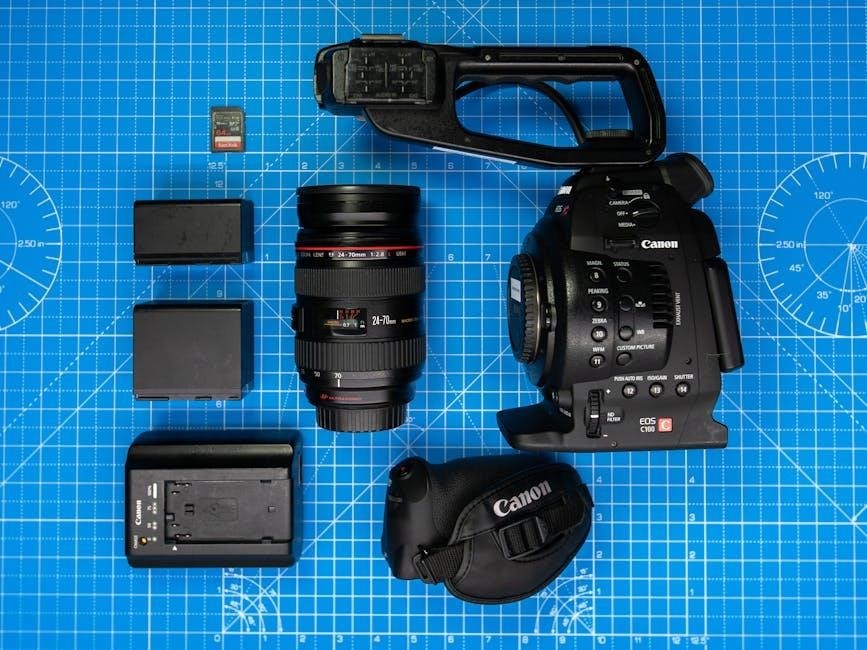
Understanding Cine Lens Optics
Cine lens optics involve the study of light behavior through lenses, focusing on aperture, focal length, and focus control․ These principles shape the visual storytelling in filmmaking․
3․1 Basic Principles of Lens Optics
Lens optics revolve around how light interacts with glass elements, bending rays to form images․ Key principles include refraction, focal length, and aperture control, which influence depth of field and light transmission․ Understanding these basics is crucial for optimizing lens performance in cinematic applications, ensuring clarity and desired aesthetic effects․ Proper comprehension of these principles helps filmmakers and technicians achieve precise control over visual elements, enhancing the storytelling process through deliberate optical choices․
3․2 How Cine Lenses Differ from Photography Lenses
Cine lenses are designed for motion picture demands, offering precise control over focus and aperture․ They feature minimal focus breathing and consistent aperture scaling, ensuring smooth, cinematic results․ Unlike photography lenses, cine lenses prioritize durability and ergonomic design for professional use, with markings optimized for precise adjustments․ Their optical coatings and mechanical constructions minimize flare and ghosting, enhancing image quality․ These distinctions make cine lenses indispensable for filmmakers seeking high-performance tools tailored to the unique challenges of cinematic storytelling․
3․3 The Role of Aperture, Focal Length, and Focus
Aperture controls light entry, affecting depth of field and exposure․ Focal length determines angle of view and image size, influencing composition․ Focus ensures sharpness, guiding viewer attention․ Together, they shape visual style, enabling precise control over lighting, perspective, and storytelling elements in film․ These elements are crucial for achieving desired aesthetic and technical outcomes in cinematography, as explained in The Cine Lens Manual, a comprehensive guide for filmmakers․
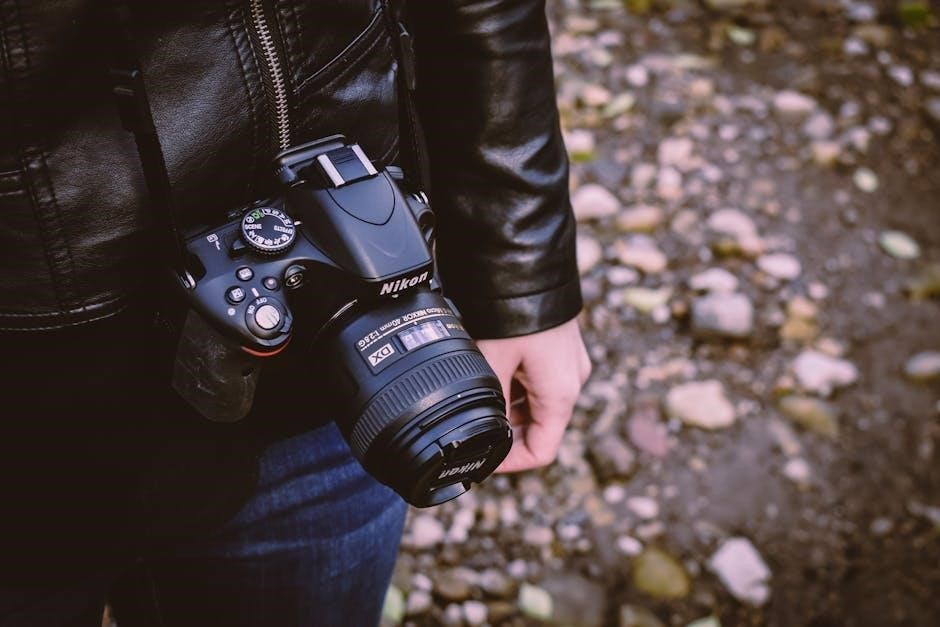
Design and Construction of Cine Lenses
Cine lenses are crafted with precision, combining mechanical and optical expertise․ High-quality materials ensure durability, while advanced engineering guarantees reliability for filmmakers seeking exceptional optical performance․
4․1 Mechanical and Optical Design Considerations
Cine lenses demand precise mechanical engineering for smooth focus and aperture control, ensuring seamless operation during filming․ Optically, they are designed to minimize distortion and chromatic aberration, delivering sharp, consistent images․ Advanced coatings enhance light transmission and reduce flare, while robust housings protect internal components from environmental stress․ The balance between form and function is critical, as these lenses must withstand rigorous use on set while maintaining optical excellence․ Every design aspect, from gear placement to glass selection, is optimized for both performance and durability, making cine lenses indispensable tools for filmmakers․
4․2 Materials and Manufacturing Processes
Cine lenses are crafted from high-quality optical glass and precision-engineered metals to ensure exceptional durability and optical clarity․ Advanced manufacturing techniques, such as precision grinding and polishing, are employed to achieve flawless glass elements․ Specialized coatings are applied to reduce glare and enhance light transmission․ The use of robust materials and meticulous assembly processes ensures that lenses can withstand the rigors of professional filmmaking․ Quality control is stringent, with each lens undergoing thorough testing to meet exacting standards․ This combination of premium materials and cutting-edge manufacturing ensures unparalleled optical performance and longevity for cine lenses․
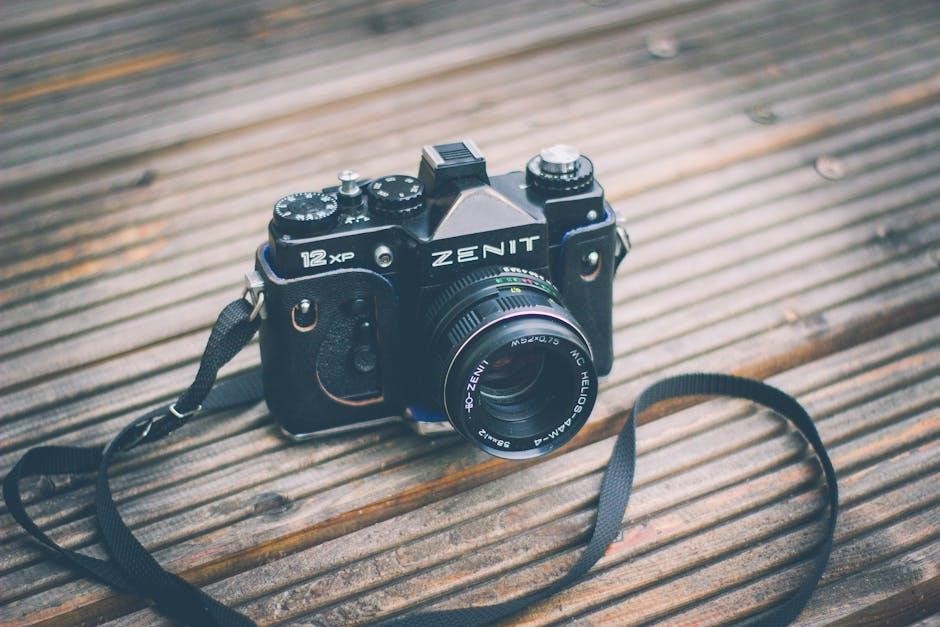
4․3 Customization and Specialized Lenses
Customization and specialized lenses cater to filmmakers’ unique artistic visions․ Many manufacturers offer tailored solutions, such as detuned lenses for specific optical effects or custom coatings for unique visual styles․ Specialized lenses, like anamorphic or macro lenses, serve niche purposes, enhancing creativity․ Filmmakers often collaborate with lens makers to create one-of-a-kind optics․ These bespoke options empower storytellers to achieve distinct visual signatures, blending technical precision with artistic intent․ Customization ensures lenses meet specific project demands, offering unparalleled flexibility and innovation in cinematography․

Lens Modifications and Customizations
Lens modifications and customizations allow filmmakers to tailor optics for specific creative needs, enhancing visual storytelling through unique effects and precision adjustments․
5․1 Common Modifications for Cine Lenses
Common modifications for cine lenses include focal length adjustments, aperture modifications, and coatings to enhance optical performance․ These customizations enable filmmakers to achieve unique visual effects, ensuring their creative vision is realized․ Modifications can also improve lens durability and functionality for specific shooting conditions․ Whether altering the glass elements or integrating advanced focus systems, these changes allow cinematographers to push artistic boundaries and deliver distinctive imagery in their work․
5․2 DIY vs․ Professional Lens Customization
DIY lens customization can offer cost-effective solutions for filmmakers, allowing for personalization and experimentation․ However, professional customization ensures precision and reliability, crucial for high-stakes productions․ While DIY modifications may suit independent projects, they risk compromising lens performance and longevity․ Professional services, with their expertise and advanced tools, guarantee optimal results, making them the preferred choice for industry professionals who require flawless optical quality and durability․ Balancing creativity with technical excellence, the decision between DIY and professional customization depends on the project’s scope and the filmmaker’s expertise․
5․3 Risks and Challenges of Lens Alterations
Modifying cine lenses carries significant risks, including optical degradation, mechanical instability, and potential damage to internal components․ Improper adjustments can lead to focus inaccuracies, light leaks, or compromised image quality․ Additionally, alterations may void manufacturer warranties and reduce resale value․ Without specialized knowledge and tools, DIY modifications can result in irreversible harm․ Even professional customization requires careful planning to avoid unintended consequences․ Filmmakers must weigh the creative benefits against these technical and financial risks, ensuring modifications align with project goals and are executed by skilled professionals to preserve the lens’s performance and longevity․
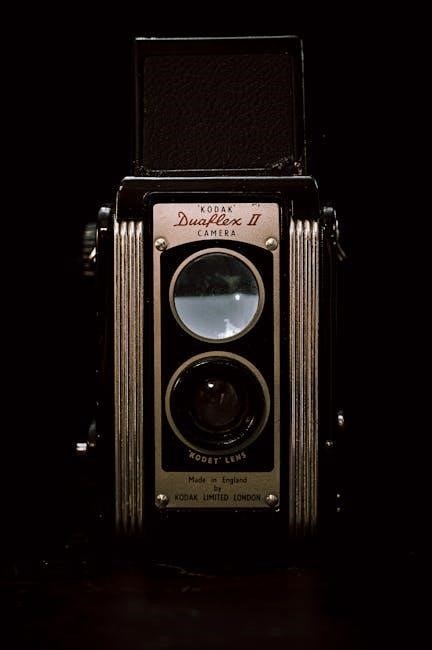
Testing and Evaluating Cine Lenses
Testing cine lenses involves measuring optical performance, distortion, and flange focal distance․ Manufacturers and cinematographers use these evaluations to ensure lenses meet professional standards and deliver desired visual results․
6․1 Methods for Testing Lens Performance
Testing lens performance involves rigorous optical and mechanical assessments․ Techniques include MTF (Modulation Transfer Function) analysis to measure sharpness, distortion mapping to evaluate curvature, and flange focal distance verification for compatibility․ Additionally, chromatic aberration is checked for color accuracy, while vignetting and bokeh are tested for aesthetic qualities․ Mechanical durability and focus precision are also examined․ These methods ensure lenses meet professional standards, delivering consistent and high-quality results for filmmakers․ Proper testing is crucial for maintaining optical integrity and achieving desired visual outcomes in cinematic applications․
6․2 Qualifying Lenses for Professional Use
Qualifying lenses for professional use involves evaluating optical and mechanical performance․ Lenses must meet strict criteria, including high resolving power, consistent color reproduction, and precise focus control․ Optical quality is assessed for sharpness, contrast, and absence of aberrations․ Mechanical durability and reliability are tested under real-world conditions․ Additionally, compatibility with various camera systems and ergonomic design are considered․ Professional lenses must deliver consistent results across multiple units and setups․ This rigorous qualification process ensures filmmakers can rely on their lenses to achieve the desired visual excellence in demanding production environments․ Proper qualification is essential for maintaining professional standards in cinematography․
6․3 Interpreting Test Results and Lens Characteristics
Interpreting test results and lens characteristics involves analyzing optical performance metrics like MTF charts, distortion, and flare․ These tests reveal how well a lens captures detail, maintains sharpness across the frame, and controls light behavior․ Mechanical evaluations assess focus accuracy, aperture consistency, and build durability․ Understanding these results helps filmmakers choose lenses that match their creative goals․ Key characteristics such as color rendition, bokeh quality, and light transmission are also evaluated․ By interpreting these factors, professionals can optimize lens performance for specific shooting conditions, ensuring visual consistency and artistic intent are preserved in every frame․
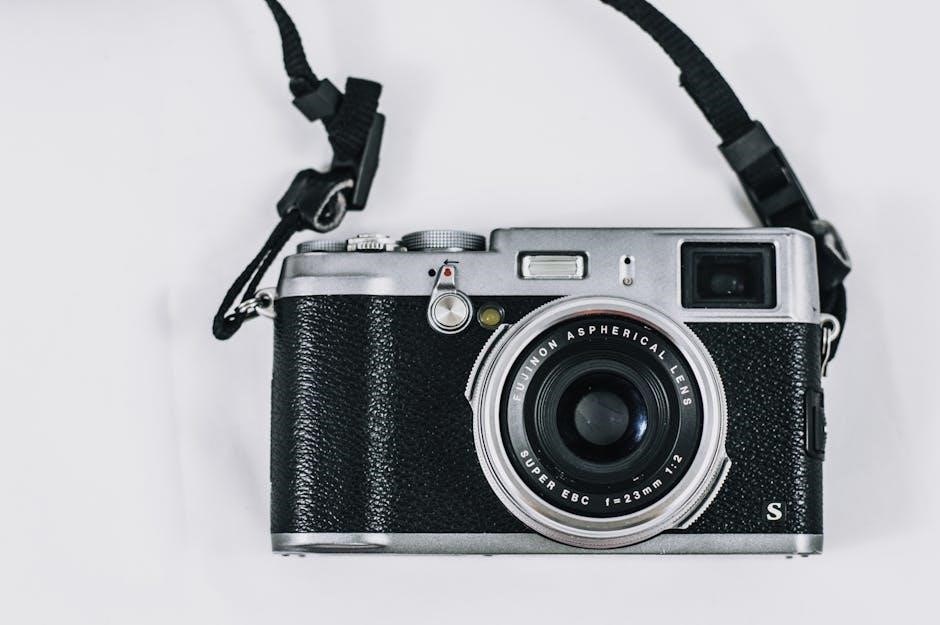
Maintenance and Care of Cine Lenses
Proper maintenance involves regular cleaning, safe storage, and professional servicing․ Use microfiber cloths and specialized solutions to avoid scratches․ Store lenses in dry, cool environments to prevent damage and fungal growth․ Schedule periodic checks to ensure optical and mechanical performance remains optimal․ Addressing issues early prevents costly repairs and ensures longevity of your cine lenses․
7․1 Best Practices for Lens Cleaning and Storage
- Use soft, dry microfiber cloths to clean lenses, avoiding harsh chemicals or tissues that may scratch surfaces;
- Store lenses in protective cases or pouches to prevent physical damage and exposure to dust․
- Maintain a cool, dry environment to avoid moisture buildup and fungal growth․
- Avoid extreme temperatures, as they can affect lens performance and longevity․
- Handle lenses by the edges or housing to prevent oil from fingerprints affecting optical coatings;
- Regularly inspect lenses for debris or damage and address issues promptly to prevent degradation․
- Consider professional servicing for deep cleaning and maintenance to ensure optimal performance․
7․2 Servicing and Repair Options
Servicing and repair of cine lenses require specialized expertise․ Professional technicians use precision tools to adjust optics, replace worn components, and ensure focus accuracy․ Preventative maintenance involves cleaning internal elements and lubricating mechanical parts․ Repairs for damaged glass or misaligned optics should only be entrusted to authorized service centers․ Rental houses often provide maintenance programs, extending lens lifespan and performance consistency․ Regular servicing ensures reliability and maintains the lens’s optical quality, crucial for professional filmmaking․ DIY repairs are discouraged due to the risk of irreversible damage to high-precision optics․
7․3 Preventative Measures to Avoid Damage
Preventative care is crucial for maintaining cine lenses․ Always store lenses in protective cases to avoid scratches and impacts․ Clean lenses with microfiber cloths and avoid harsh chemicals․ Handle lenses by the barrel, never the glass, to prevent fingerprints and smudges․ Avoid extreme temperatures and humidity, as they can damage coatings and mechanics․ Use lens covers and caps when not in use․ Regularly inspect for dust or debris and address issues promptly․ Avoid touching optical surfaces and never force-mount lenses, as this can misalign elements․ By following these practices, filmmakers can extend the lifespan and ensure optimal performance of their cine lenses․
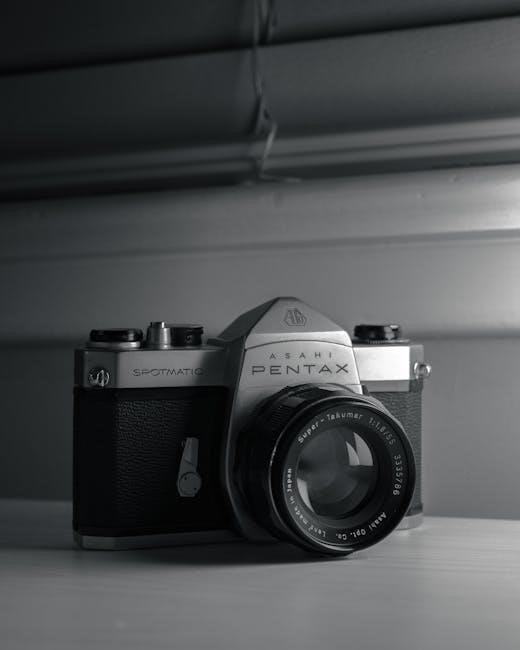
The Artistic Use of Cine Lenses
Cine lenses are essential tools for visual storytelling, enabling filmmakers to craft unique cinematic styles, manipulate depth, and emphasize emotional narratives through precise optical control and creative focus․
8․1 How Lenses Influence Visual Style
Cine lenses play a crucial role in shaping the visual style of a film, offering precise control over depth, perspective, and light․ Different focal lengths and apertures create distinct framing and focus effects, while optical characteristics like contrast and chromatic aberration influence the overall aesthetic․ The choice of lens can enhance or transform the mood of a scene, with certain lenses offering unique bokeh, sharpness, or color rendition․ Filmmakers collaborate closely with cinematographers to select lenses that align with their creative vision, ensuring the visual language of the film resonates emotionally and narratively․ Iconic films often showcase how specific lenses define their visual identity․
8․2 Collaborating with Cinematographers and Directors
Collaboration between cinematographers, directors, and lens technicians is pivotal in achieving a film’s visual style․ Cinematographers and directors work closely to select lenses that align with the story’s tone and aesthetic․ Understanding the technical capabilities of lenses, such as focal length and aperture, allows them to make informed creative decisions․ This teamwork ensures that the visual elements complement the narrative, enhancing the emotional impact of each scene․ The synergy between artistic vision and technical expertise is essential for crafting a cohesive and impactful cinematic experience, making the Cine Lens Manual an invaluable resource for these collaborations․
8․3 Case Studies of Iconic Lens Usage in Films
Films like Blade Runner 2049 and Inception showcase iconic lens usage, where cinematographers employed specific optics to create distinct visual styles․ For instance, the use of anamorphic lenses in Blade Runner 2049 emphasized a futuristic yet nostalgic aesthetic, while spherical lenses in Inception delivered sharp, realistic imagery․ These case studies highlight how lens choices directly influence a film’s tone and narrative․ By analyzing these examples, filmmakers gain insights into how lenses can be used as storytelling tools, demonstrating the practical application of the principles outlined in The Cine Lens Manual․

Advanced Topics in Cine Lens Technology
The Cine Lens Manual explores cutting-edge innovations in lens design, advanced materials, and the integration of digital technology, shaping the future of cinema optics and filmmaking․
9․1 Innovations in Lens Design and Materials
Modern advancements in cine lens design focus on enhancing optical performance, durability, and versatility․ Innovations include high-refraction glass for superior clarity, nanocoatings to minimize flare, and lightweight materials like carbon fiber for easier handling․ These developments cater to the demands of digital cinematography, offering precise control over light transmission and color accuracy; Additionally, the integration of smart technology, such as focus motors with advanced feedback systems, ensures smoother operation․ Such innovations empower filmmakers to achieve unprecedented visual fidelity, making modern cine lenses indispensable tools for storytelling and artistic expression in the digital age․
9․2 The Impact of Digital Technology on Lens Development
Digital technology has revolutionized cine lens development, driving demand for lenses that optimize digital sensors’ capabilities․ Advances in high-resolution sensors and color science have pushed manufacturers to create lenses with exceptional sharpness and accurate color rendition․ Digital tools now enable precise lens testing and calibration, ensuring consistency and performance․ Additionally, the integration of metadata and electronic interfaces allows for seamless communication between lenses and cameras, enhancing workflow efficiency․ These advancements have not only improved image quality but also streamlined the filmmaking process, enabling cinematographers to achieve their creative visions with greater precision and reliability․
9․3 Future Trends in Cine Lens Manufacturing
Future trends in cine lens manufacturing are expected to focus on high-resolution optics, optimized for digital sensors, and integrated metadata systems for enhanced workflow efficiency․ Manufacturers are exploring lightweight materials and modular designs to meet the demands of modern filmmaking․ Additionally, advancements in autofocus technology and wireless communication are anticipated to become more prevalent․ Customization options, such as interchangeable mounts and adjustable optics, will likely grow in popularity․ Sustainability is also a rising priority, with companies investing in eco-friendly production processes and recycled materials․ These innovations aim to balance artistic needs with technological advancements, ensuring cine lenses remain central to filmmaking excellence․
The Cine Lens Manual serves as an essential resource, bridging the gap between technical knowledge and artistic application, making it indispensable for filmmakers at every level of expertise․
10․1 Summary of Key Concepts
The Cine Lens Manual encapsulates the art and science of cinema optics, covering lens history, optical principles, design, customization, and maintenance․ It bridges technical details with practical applications, offering insights for filmmakers to enhance visual storytelling․ By addressing the needs of professionals and enthusiasts alike, it serves as a comprehensive resource, ensuring a deeper understanding of how lenses shape cinematic experiences․ The manual underscores the importance of optics in filmmaking, providing a foundation for both creative and technical decision-making․
10․2 Why The Cine Lens Manual is Essential for Filmmakers
The Cine Lens Manual is an indispensable resource for filmmakers, offering a detailed exploration of cinema optics․ It bridges the gap between technical knowledge and practical application, empowering cinematographers, directors, and camera assistants to make informed decisions․ The manual’s comprehensive coverage of lens history, design, and maintenance ensures filmmakers can maximize their tools for storytelling․ Whether you’re a novice or a seasoned professional, this guide provides the insights needed to elevate your craft, making it a must-have for anyone serious about achieving exceptional visual results in their work․
10․3 Final Thoughts on the Importance of Cine Lenses
Cine lenses are the heart of cinematic storytelling, shaping the visual language of films․ They transform light and emotion into compelling imagery, making them indispensable for filmmakers․ The Cine Lens Manual underscores their significance, offering insights into their history, design, and artistic use․ By mastering these tools, filmmakers can unlock new creative possibilities, ensuring that the art of cinematography continues to evolve․ This manual stands as a testament to the enduring impact of cine lenses on the craft of filmmaking․
